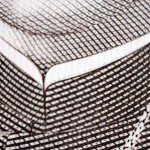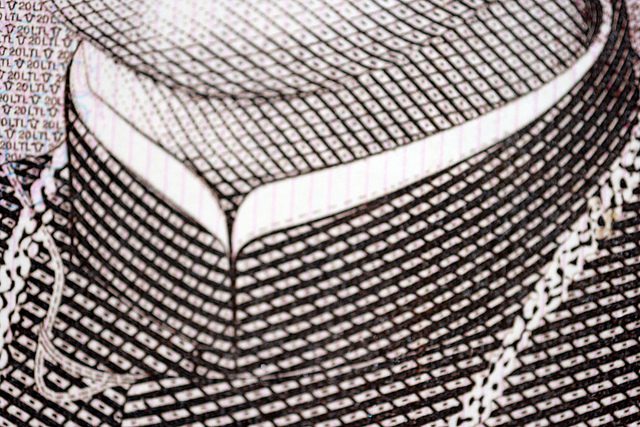
It’s not just a Catholic bishop problem.
It’s not just a Catholic priest problem.
It’s not just a problem with men.
It’s not a homosexual problem.
It’s not a baby boomer problem.
It’s not a Democrat problem.
It’s not a Republican problem.
It’s a human problem. And it began at the Fall.
The woman caused me to eat, said the man. The serpent told me to eat, answered the woman. And the blame game entered into us and has not departed from us since.
To this day, we seek to cast the parts of ourselves we don’t like onto other people and banish them from our sight. Psychologists have a name for the phenomena. They call it projection.
We “project” the parts of our own self — the ignoble impulses, the dastardly desires, the downright mean things we think — onto other people. Then we punish these hapless folks with our rage as if they really were what we hate in ourselves. Whenever people are confronted with unbearable cognitive dissonance due to the shortfall between their ideal self and what they fear they actually are, this disowning projection comes to hand. It’s a device we use to ease the tension and give ourselves the illusion of squaring the circle.
People also project the things about themselves that we need or want — things we wish were true — onto other people. We give these folks oodles and boodles of false worship. This kind of projection at some point almost always seems to become a longing for Mama.
I spend a lot of time in a nursing home these days. I’ve heard 90-year-old people, calling for their mamas. I’ve witnessed people praying to their mamas to come and take them away from there and on into heaven.
The demagogues we select to worship are nothing more than a figure of this crying need for our mothers. We pin whatever kind of characterization we need to soothe ourselves on them, and then we defend them, or at least our fantasy version of them, with every bit of force that our neediness can provide us.
Politicians and priests alike understand this business of projection in an intuitive but thorough way. They are so often the recipients of both projections that idolize and projections that demonize that their lives are a kind of schooling in the phenomena.
Demagogues seize on this proclivity to project and encourage it in their followers. They heighten it with every bit of showmanship they possess. They manipulate it, and build on it and use it to gain power and get away with things that otherwise would not be allowed.
Nothing enrages people more than when they are forced to know that one of their false idols is in reality just another human being who cannot save them and does not care about them. It almost always requires painful psychological force to batter down the barriers they have placed between their comprehension and the fact that this demagogue is not and never has been their mother and does not love them at all. The howling rage they fall into when they see this is the outrage of someone who has been stripped bare and left on the ice to die by their own beloved parent.
Losing an idol is being orphaned, long after real parents have gone to dust. The rage that focuses on the ones who take the idol away, who strip down the facade of projection and reveal that the Great and Magnificent Oz is just a portly old man with a microphone and a jazzed-up flame-thrower, is usually enough to silence anyone who would try to do it.
The trouble, of course, is that facts are stubborn things, and lies cannot live forever. Sooner or later, reality has a way of asserting itself, and the bigger the lie, the more desperate the projection, the greater the devastated wrath that follows.
The outpouring of anger that has followed each step down on the 20-year plunge into the pit of priestly sexual depravity and the corrupt clerical culture that sustained it, has also been marked by a ceaseless searching for some one to blame and disown. We need a Judas Goat to hang this on and then send into the desert to die, along with our rage and disconnect.
We want to keep on believing in the priesthood as the priesthood depicts itself; as another Christ, a stand-in for Jesus who speaks for God and who we can trust without being forced to think for ourselves. We want our mothering priests back and our certainties back with them. We want to feel safe and loved in the Church. And we are searching for someone or something to blame and cast out so that we can move things back to our center point of certainty and go back to sleep.
But facts are stubborn things, and lies cannot live forever.
The fact is that we have been betrayed in an obscenely un-Christlike manner by this priesthood that says it is another Christ. The fact is that many of the same bishops who say they are our shepherds, and that they stand in a direct line from Peter, have deliberately and with full malice of forethought, enabled, allowed and even participated in the repetitive and on-going sexual abuse of children, nuns and seminarians.
We want a way out of this, just as much as they do. But the way out, if it is littered with the bodies of more innocent people is not the way out. It is the way deeper in. We can’t expunge the disgrace and shame of what our priests and bishops have done to us by doing things that are just as bad ourselves.
Facts are stubborn things, and a lie cannot live. We are not going to find a way back to the light unless we hold ourselves back from the temptation of creating new falsities and harming more people by living in the blame game that has cursed us from Eden.
We can do this. We can rebuild and reclaim both this Church of ours and our own lives for Christ. But we cannot do it by creating false “facts” in order to prop up a corpse of lies.
To be continued.
Note: “Facts are stubborn things,” is a quote from John Adams.
Note: “A lie cannot live.” is a quote from Martin Luther King, Jr.













